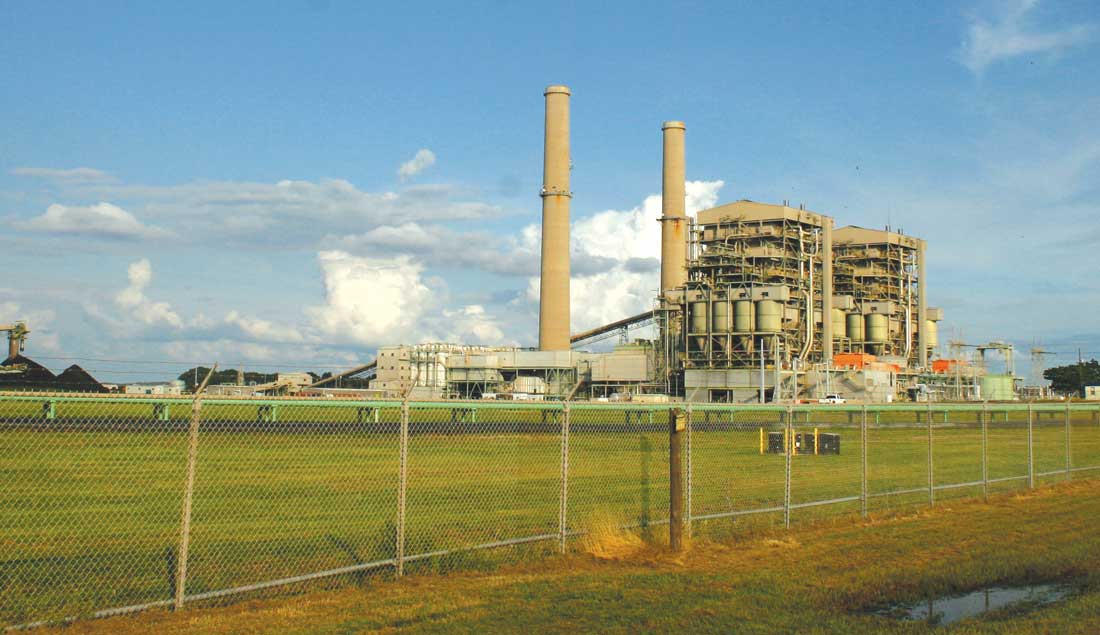Coal-fired power plants are notorious for their contributions to air pollution in this country, particularly in Texas. They contribute hugely to carbon dioxide and mercury emissions, where Texas holds an undesirable first place among the states.
Environmentalists have sued repeatedly over the years to try to pressure state and federal governments into enforcing air pollution standards and regulations involving the plants.
Even here, however, this month’s news was a show-stopper: Coal-fired power plants, according to a report from major environmental groups, also have become the largest source of toxic water pollution in this country when measured by the toxicity of their discharges.
Coal plants have taken over that top spot in water pollution because the Environmental Protection Agency, according to the report, has given the industry a pass for more than 30 years by failing to set standards for many of the most toxic substances. Nearly 70 percent of such plants operate without any limits on how much arsenic, boron, cadmium, lead, and mercury they can dump into waterways. More than a third of the plants aren’t even required to track those discharges.
“I remember scratching my head, talking to our executive director, and saying, ‘Have they [the EPA] really not done this?’ ” recalled Jennifer Duggan, managing attorney with the Environmental Integrity Project and one of the lead authors of the report, called “Closing the Floodgates.” Her organization helped take the EPA to court to force it to institute water pollution standards for the industry.
What’s more, according to the report, nearly half the country’s 386 coal-fired plants are operating under expired federal Clean Water Act permits, including some with permits that expired five or more years ago. In Texas, for instance, six plants — including some of the oldest, dirtiest coal plants in the state — are listed as operating under permits that expired as long ago as 2010.
Environmental groups, as well as federal fish and wildlife and Forest Service scientists, say the damage caused by the pollution has been profound. In many parts of the country, thanks to mercury poisoning largely from coal plants, fish from lakes and streams are no longer edible. In some places, Duggan said, hunters have even stopped taking deer and birds for food, because the animals, drinking from polluted water sources, may carry too heavy a toxic load.
Robert Wendelglass, president of Clean Water Action, said in a telephonic news conference last week that pollution from coal-fired plants seriously affects the health of many thousands of people each year through increased risks for cancer and through lowered IQs for children, among other effects. His group helped produce the report.
Tom “Smitty” Smith, Texas state director of the Public Citizen watchdog group, said there are a dozen bodies of water in Texas where the fish are so contaminated by mercury that health authorities warn against eating them. For 10 of those 12, he said, “the largest contributor [of mercury pollution] is a nearby coal plant.”
Nudged along by a lawsuit from conservation groups, the EPA in April finally proposed national standards for toxins that power plants are allowed to discharge into waterways. But when the proposed regulations reached the White House, Duggan said, the Office of Management and Budget forced the EPA to include significantly weaker options in the regulations. Environmentalists accused the Obama administration of caving to the political power of the coal and utility industries.
Robert F. Kennedy Jr., president of the Waterkeeper Alliance, another of the groups behind the report, said the Obama administration’s version of the rules “contains loopholes that would allow the industry to discharge [pollution] as business as usual.”
Luminant, the largest power generator in Texas and operator of some of the state’s heaviest polluting coal-fired plants, said through a spokeswoman that the company “stands by its strong track records of exemplary compliance in meeting or outperforming all state and federal environmental laws, rules, and regulations.”
Asked about the company’s Clean Water Act permits and its toxic emissions, she referred a reporter back to the general statement. She referred other questions to the Association of Electric Companies of Texas, a trade group.
John Fainter, president of AECT, said the utilities and power generating companies in his trade group are in compliance with clean-water standards. “What standards there are, we meet,” he said. But he also acknowledged that he did not know the specifics of the permits of individual power plants or companies and that he had not read the environmental groups’ reports on coal plant water pollution.
Fainter suggested that the groups that put together the report are against all use of coal in power generation. Indeed some of the groups involved have opposed the licensing of new coal plants and fought to improve or end operations at others. The Beyond Coal organization advocates for moving the country’s industries away from the use of coal.
But the report’s authors make the point that the measures needed to greatly reduce, or even end, toxic water discharges from coal plants already exist and are affordable — without shutting down the plants.
“EPA records show that power plants can and do [use] affordable, available technology for handling coal ash and other toxic wastes,” Duggan said. The technologies “are out there, they’re in use, and that’s where we think the standards should be set — for what the Clean Water Act requires.”
The information in the “Closing the Floodgates” report came from EPA records, much of it originally provided by the power plant operators themselves. For the most part, the document doesn’t accuse the plants of violating EPA standards on toxic wastewater emissions — because there are few national standards that apply.
“Coal plants have been using our rivers, lakes, and streams as their own private waste dumps for decades,” the report concluded.
Existing standards for coal plants “are 31 years old and fail to set any limits on many dangerous pollutants,” the report said. It was put together by researchers and others from the EIP, Clean Water Action, Sierra Club, Earthjustice, Waterkeeper Alliance, and the Sierra Club’s Beyond Coal campaign.
The toxins that go into coal plant wastewater come from coal ash and from the chemical residues captured by scrubbers — which keep the toxins out of plants’ air emissions. The wastes include chemicals and heavy metals that can cause cancer, damage kidneys, impair brain development, destroy some wildlife populations, and result in deformations in fish and other aquatic life.













The attitude of our government in regard to the environment (especially in Texas) is
Unconscionable. If the Obama administration is indeed trying to water down these important environmental safeguards, then I am very disappointed. It does not surprise me at all that Rick Perry and the Republicans would be so pro-business that they will sell out the environment and our safe drinking water. Profit, growth, and smaller government trumps all for them and we, our children and our children’s children will all suffer the consequences.